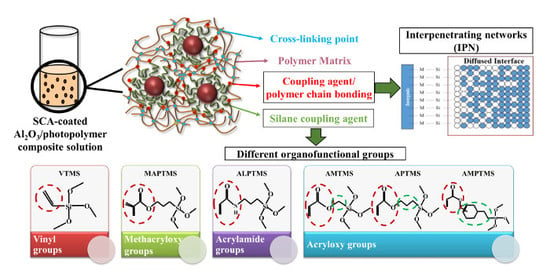A Study on the Rheological and Mechanical Properties of Photo-Curable Ceramic/Polymer Composites with Different Silane Coupling Agents for SLA 3D Printing Technology
Abstract
Share and Cite
Song, S.Y.; Park, M.S.; Lee, J.W.; Yun, J.S. A Study on the Rheological and Mechanical Properties of Photo-Curable Ceramic/Polymer Composites with Different Silane Coupling Agents for SLA 3D Printing Technology. Nanomaterials 2018, 8, 93. https://doi.org/10.3390/nano8020093
Song SY, Park MS, Lee JW, Yun JS. A Study on the Rheological and Mechanical Properties of Photo-Curable Ceramic/Polymer Composites with Different Silane Coupling Agents for SLA 3D Printing Technology. Nanomaterials. 2018; 8(2):93. https://doi.org/10.3390/nano8020093
Chicago/Turabian StyleSong, Se Yeon, Min Soo Park, Jung Woo Lee, and Ji Sun Yun. 2018. "A Study on the Rheological and Mechanical Properties of Photo-Curable Ceramic/Polymer Composites with Different Silane Coupling Agents for SLA 3D Printing Technology" Nanomaterials 8, no. 2: 93. https://doi.org/10.3390/nano8020093
APA StyleSong, S. Y., Park, M. S., Lee, J. W., & Yun, J. S. (2018). A Study on the Rheological and Mechanical Properties of Photo-Curable Ceramic/Polymer Composites with Different Silane Coupling Agents for SLA 3D Printing Technology. Nanomaterials, 8(2), 93. https://doi.org/10.3390/nano8020093







